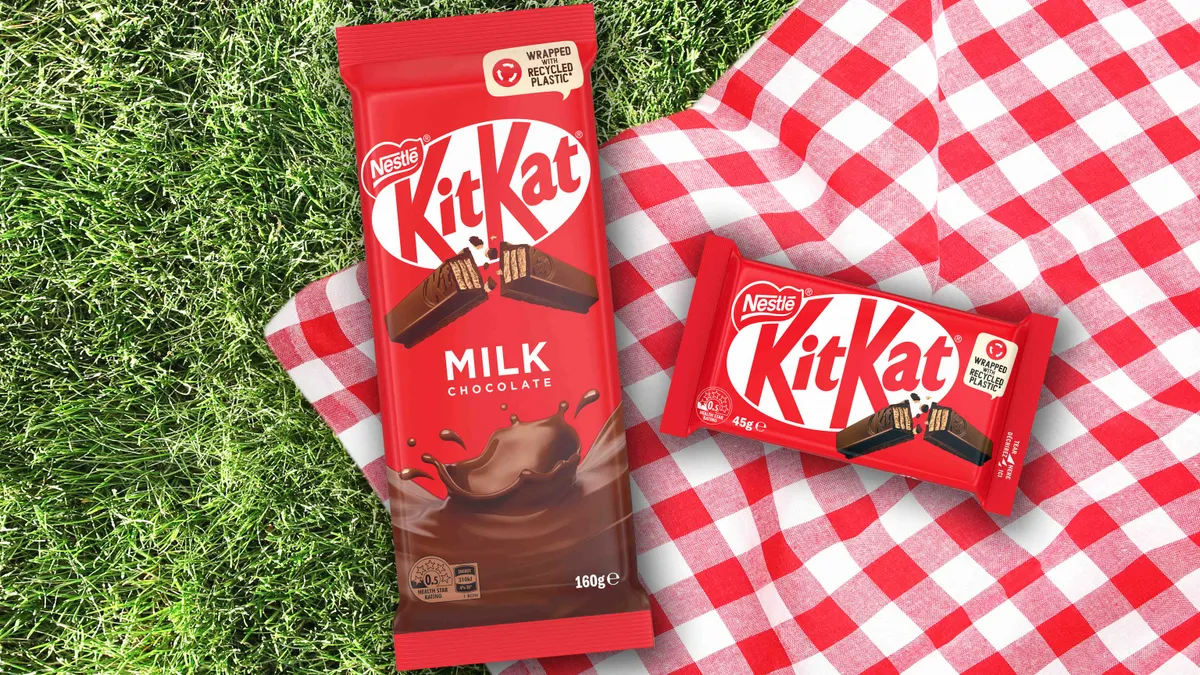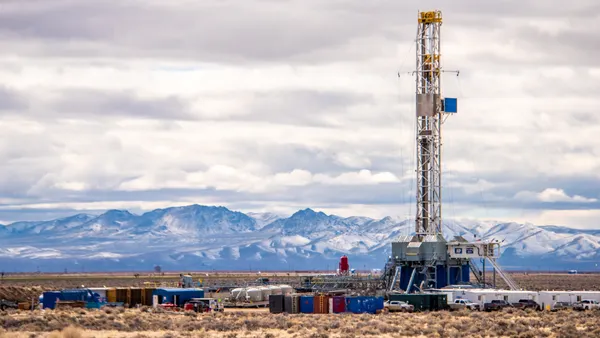Dive Brief:
- Nestlé said it developed a process to maximize cocoa output as climate challenges reduce yields for farmers.
- The food giant said its novel technique utilizes up to 30% more of the cocoa fruit to produce chocolate, cutting down on waste and generating more income for farmers. Instead of relying solely on cocoa beans, Nestlé is also using "underutilized" parts of the fruit, such as the pulp, placenta and pod husk.
- The project, currently in a pilot stage, comes as cocoa prices have plunged to under $8,000 a ton after reaching a record high of more than $12,000 a ton in late 2024. Despite the decline, prices remain significantly elevated from historic levels.
Dive Insight:
Cocoa prices have eased due to improving weather, an uptick in crop production and high costs for cocoa that have weakened demand. But there is an expectation they will continue to be elevated and volatile for some time as climate change and other factors challenge long-term production.
Despite the unpredictability, consumers still want chocolate. And there is a growing pressure for cocoa users to be better land stewards while providing a better income for farmers in the Ivory Coast and Ghana in West Africa, where much of the crop is grown.
Chocolate is typically made using only cocoa beans that are harvested, fermented, dried, roasted and then ground into a liquor, which is used to make chocolate. The world’s largest food company said this technique leaves a “significant amount” of cocoa fruit unused.
Nestlé said the process developed by its R&D team collects everything inside the pod as a wet mass, which ferments naturally, unlocking the chocolate flavor. The mass is then ground, roasted and dried into chocolate flakes which can be used to make chocolate without compromising the taste.
"With climate change increasingly affecting cocoa yields around the world, we are exploring innovative solutions that could help cocoa farmers maximize the potential of their harvests,” Louise Barrett, head of the Nestlé Research and Development Center for Confectionery in York, U.K., said in a statement.
Nestlé’s discovery is the latest effort by chocolate manufacturers to address challenges impacting cocoa. Earlier this month, Snickers maker Mars announced it is using gene-editing CRISPR technology to breed a better cocoa plant.
Some companies have worked on cocoa substitutes, but taste and consumer perception of these products remain headwinds for buy-in from major CPG companies. Mondelēz International’s SnackFutures Ventures, the company’s venture capital arm, has invested in Celleste Bio, a producer of cell-cultured cocoa ingredients.
Chocolate accounted for a record $21.4 billion in confectionery sales during the last year, with 65% of consumers indulging in the treat, according to an October report from the National Confectioners Association.
Even with the recent downturn in cocoa costs, confectionery giants have recently increased prices or announced plans to do so.
Hershey is expecting to raise candy prices by double digits as the confectionery giant faces an “unprecedented cost of cocoa” impacting many of its top brands. Swiss chocolate giant Lindt & Sprungli passed along a 15.8% price increase in the first half of the year. Toblerone and Milka manufacturer Mondelēz International also warned of similar action in 2025.











